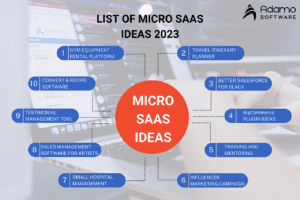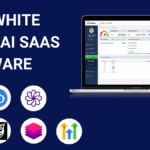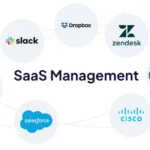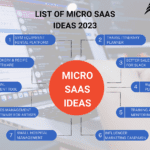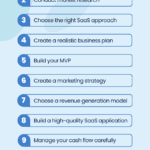Micro SaaS ideas involve creating small, focused software solutions for niche markets. These ideas leverage specific needs to deliver unique value.
Micro SaaS businesses are gaining popularity due to their low startup costs and targeted approach. Entrepreneurs can create software tools that solve specific problems for small, niche markets. This focused strategy allows for quicker development and easier customer acquisition. Examples include tools for managing social media, automating tasks, or improving productivity.
These businesses often operate with minimal overhead and can scale efficiently. By addressing specific pain points, Micro SaaS companies can build a loyal customer base. This niche focus also allows for better customer relationships and personalized service.
Introduction To Micro Saas
Micro SaaS ideas are small-scale software solutions. They solve specific problems for niche markets. These solutions are created by individuals or small teams. They require less investment and resources compared to traditional SaaS.
Defining Micro Saas
Micro SaaS stands for Micro Software as a Service. It is a small, self-contained software product. These products target a specific audience. They focus on solving a unique problem.
Micro SaaS businesses usually operate with minimal staff. Often, a single person runs the entire operation. These businesses rely on recurring revenue. This model ensures a steady income stream.
Here are some key characteristics of Micro SaaS:
- Small team or solo entrepreneur
- Low overhead costs
- Targeted niche market
- Recurring revenue model
Benefits For Entrepreneurs
Micro SaaS offers many benefits for entrepreneurs. It requires minimal initial investment. This makes it accessible to more people.
Here are some advantages:
| Benefit | Description |
|---|---|
| Low Start-Up Costs | Requires minimal financial investment |
| Flexibility | Work from anywhere, set your own hours |
| Scalability | Grow your business at your own pace |
| Recurring Revenue | Stable income from subscriptions |
Entrepreneurs can start small and scale up. They can test ideas without high risk. This makes it easier to pivot if needed. The recurring revenue model provides financial stability.
Micro SaaS products often fill gaps in larger software solutions. This creates a loyal customer base. Entrepreneurs can focus on providing excellent customer service.
Overall, Micro SaaS is a viable path for many entrepreneurs. It offers flexibility, low costs, and stable income.
Spotting Market Gaps
Finding a successful Micro SaaS idea involves spotting market gaps. This means identifying areas where current solutions fall short. By focusing on underserved niches and analyzing customer pain points, you can develop a product that fills these gaps effectively.
Identifying Underserved Niches
Underserved niches are market areas with few solutions. Start by exploring industries with limited competition. Look for small business sectors with specific needs. For example:
- Local service providers
- Specialized healthcare services
- Unique educational tools
Use online forums and social media to spot these niches. Engage with communities to understand their needs better. Look for repeated requests or common complaints. These indicate a lack of existing solutions.
Analyzing Customer Pain Points
Customer pain points are problems users face with current solutions. Addressing these issues can make your Micro SaaS successful. Gather insights through:
- Customer reviews
- Surveys and polls
- Direct feedback
Check reviews on platforms like Amazon, Yelp, or app stores. Identify common complaints about existing products. Create surveys asking specific questions about user frustrations.
| Source | Method | Example |
|---|---|---|
| Online Forums | Engagement | Reddit discussions |
| Customer Reviews | Analysis | Amazon product feedback |
| Surveys | Direct Questions | Google Forms |
By focusing on these methods, you can create a Micro SaaS that truly fills market gaps.
Trends In Micro Saas
Micro SaaS is an exciting area. It focuses on small, specialized software solutions. These solutions target niche markets. They solve specific problems. Let's explore the latest trends in Micro SaaS.
Emerging Industries
Several industries are booming. They provide fertile ground for Micro SaaS ideas. Here are some examples:
| Industry | Micro SaaS Opportunity |
|---|---|
| Healthcare | Telemedicine scheduling, patient management tools |
| Education | Online tutoring platforms, course management systems |
| Remote Work | Team collaboration tools, project management software |
These industries show rapid growth. They need specialized software. This creates opportunities for Micro SaaS products.
Shifting Consumer Behaviors
Consumer behaviors are changing. This shift opens new doors for Micro SaaS. Here are some trends:
- Personalization: Consumers want personalized experiences. Micro SaaS can offer tailored solutions.
- Remote Work: More people work from home. There's a need for remote work tools.
- Subscription Models: Subscription-based services are popular. Micro SaaS can offer recurring revenue models.
Understanding these shifts is crucial. It helps in creating relevant Micro SaaS products. The focus should be on solving specific problems efficiently.
Idea Generation Techniques
Generating ideas for Micro SaaS can be challenging. Effective techniques can help you discover innovative solutions. Let's explore some methods to spark your creativity.
Brainstorming Sessions
Brainstorming sessions bring together diverse perspectives. Gather your team and encourage open discussion. Use a whiteboard or sticky notes to jot down ideas. Consider these steps for a productive session:
- Set a clear objective.
- Encourage wild ideas.
- Build on others' suggestions.
- Prioritize ideas based on feasibility.
Break down ideas into actionable tasks. Assign responsibilities and set deadlines.
Leveraging Personal Expertise
Your personal expertise is a valuable resource. Reflect on your skills and experiences. Identify problems you have faced and solved. Here are some ways to leverage your expertise:
- List your skills and knowledge areas.
- Identify common challenges in these areas.
- Think about how technology can solve these challenges.
- Research existing solutions and find gaps.
Use your unique insights to create tailored solutions. Your expertise can lead to innovative and practical Micro SaaS ideas.
Validating Your Micro Saas Idea
Before investing time and resources, ensure your Micro SaaS idea will succeed. Proper validation can save you from potential pitfalls. Let's explore key steps for validating your idea.
Market Research Strategies
Understanding your target market is crucial. Use these strategies to gather insights:
- Surveys: Create online surveys to gather user opinions.
- Competitor Analysis: Study your competitors. Identify their strengths and weaknesses.
- Forums and Communities: Participate in relevant forums. Engage with your potential users.
Use tools like Google Trends and SEMrush to analyze search trends. Identify popular keywords and topics. This helps you understand market demand.
Minimum Viable Product Testing
Build a Minimum Viable Product (MVP) to test your idea quickly. An MVP includes only essential features. It helps you collect user feedback early.
Follow these steps to create and test your MVP:
- Define Core Features: List the essential features of your Micro SaaS.
- Build a Prototype: Create a basic version of your product.
- User Testing: Share your MVP with a small group of users. Gather their feedback.
- Iterate: Use the feedback to improve your product.
Testing your MVP helps you identify potential issues early. Make necessary adjustments before the full launch.
By following these steps, you can validate your Micro SaaS idea effectively. This ensures you build a product that meets market needs.
Building Your Micro Saas
Starting a Micro SaaS can be exciting. You need a clear plan and the right tools. This guide helps you choose the right tech stack and design for scalability.
Choosing The Right Tech Stack
Choosing the right tech stack is crucial. It affects your product's performance and future growth.
- Frontend: Use React or Vue.js for a responsive user interface.
- Backend: Consider Node.js or Python for robust backend processing.
- Database: Use MongoDB or PostgreSQL for efficient data storage.
- Hosting: Choose AWS or Heroku for reliable hosting services.
Make sure your stack is easy to maintain. This ensures smooth development and less downtime.
Designing For Scalability
Scalability is key for your Micro SaaS. Design your product to handle growth without performance issues.
- Use Microservices: Break your application into smaller, manageable services.
- Load Balancing: Distribute traffic evenly across servers. This prevents overload.
- Database Sharding: Split your database into smaller chunks. This improves speed.
- Caching: Use caching to store frequently accessed data. This reduces load times.
Monitor your application regularly. Use tools like New Relic or Datadog for real-time insights.
Marketing Your Micro Saas Solution
Marketing your Micro SaaS solution is vital for attracting customers. You need a plan to stand out in the crowded market. Effective marketing can lead to more users and higher revenue. Below are some strategies to help you market your Micro SaaS solution.
Effective Branding
Branding is crucial for your Micro SaaS solution. Your brand should be unique and memorable. A good brand helps in gaining trust.
Create a catchy logo and a professional website. Use consistent colors and fonts. These elements make your brand recognizable.
Storytelling can also boost your brand. Share your journey and mission. People love to connect with stories.
Growth Hacking Tips
Growth hacking is about smart marketing strategies. It helps you grow quickly with limited resources.
Here are some growth hacking tips:
- Leverage Social Media: Use platforms like Twitter and LinkedIn.
- Offer Free Trials: Let users try before they buy.
- Referral Programs: Encourage users to invite friends.
- Content Marketing: Write blogs and create videos.
- Email Campaigns: Send newsletters to your audience.
Implement these tips to see rapid growth. Always measure your results to know what works.

Credit: blog.cinnox.com
Monetization Strategies
Monetizing a Micro Saas product involves smart strategies. Picking the right approach can make or break your venture. Let's explore effective methods to generate revenue.
Subscription Models
Subscription models are a popular choice for Micro Saas products. Customers pay a recurring fee for continuous access. This ensures a steady stream of income.
You can offer different subscription tiers. Each tier can provide varying levels of features and support. This allows users to choose a plan that fits their needs and budget.
| Plan | Price | Features |
|---|---|---|
| Basic | $10/month | Basic features |
| Pro | $30/month | Advanced features |
| Enterprise | $100/month | All features + priority support |
Freemium Vs. Premium Offerings
The Freemium model provides a basic version for free. Users can upgrade to premium for advanced features. This approach attracts a large user base quickly.
Premium offerings require users to pay upfront. This model ensures immediate revenue but may attract fewer users initially.
Consider offering a free trial. This lets potential customers experience the full product before committing. A well-balanced freemium to premium transition can boost conversions.
- Freemium: Attracts many users
- Premium: Generates immediate revenue
- Free Trial: Encourages users to commit
Customer Support And Success
Micro SaaS businesses thrive on delivering exceptional customer support and success. Providing stellar service and cultivating a community are key strategies to achieve this.
Providing Stellar Service
Offering stellar customer support is crucial for Micro SaaS success. Customers expect quick and effective solutions. Here are some steps to ensure exceptional service:
- 24/7 Support: Ensure round-the-clock assistance for your users.
- Live Chat: Implement live chat for real-time problem-solving.
- Knowledge Base: Create a comprehensive knowledge base for self-service.
- Ticket System: Use a ticket system to manage and resolve issues.
By focusing on these elements, you can build trust and loyalty. Happy customers are more likely to recommend your product.
Cultivating A Community
Building a strong community around your Micro SaaS can drive success. Engage with your users and create a sense of belonging. Here are some tips:
- Forums: Create forums for users to share experiences and tips.
- Social Media Groups: Use social media to connect with your audience.
- Webinars: Host webinars to educate and engage your users.
- User Feedback: Collect and implement user feedback regularly.
Engaged users are more likely to stick around and help your product grow. A loyal community can provide invaluable insights and support.
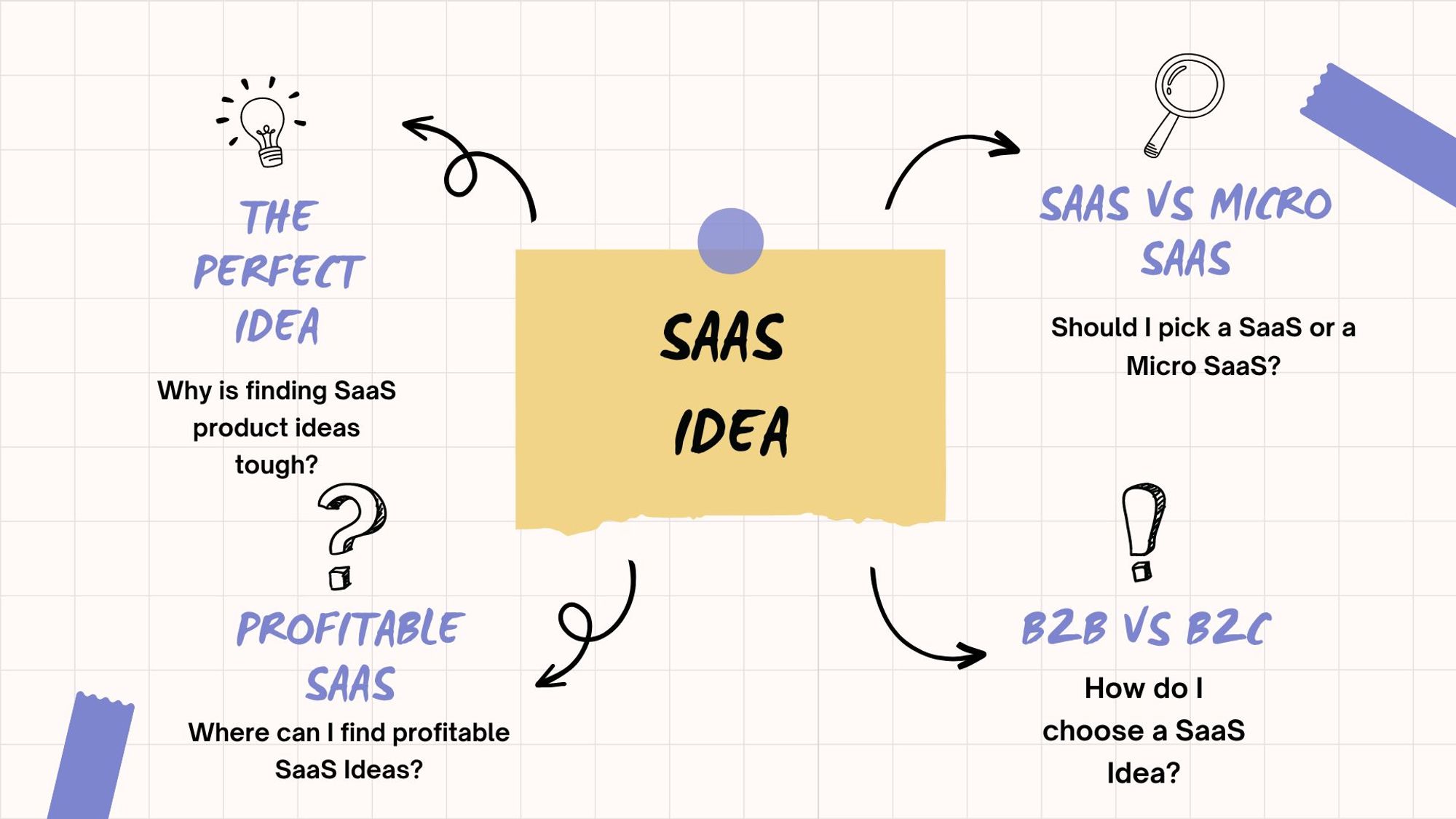
Credit: microsaashq.com
Scaling Your Micro Saas Business
Scaling a Micro SaaS business can be a thrilling journey. With the right strategies, your small-scale software can reach new heights. Focus on expanding your product line, and form strategic partnerships. This way, you can maximize your growth potential and increase revenue.
Expanding Your Product Line
Growing your product line is a key step in scaling. Introduce new features that complement your existing product. This can attract more customers and retain the current ones.
Consider customer feedback to identify gaps in your offerings. Filling these gaps can make your product more valuable. Also, diversify your product line to reach different market segments.
For example, if your Micro SaaS helps with project management, add modules for time tracking or reporting. These additions can make your product indispensable.
Partnerships And Collaborations
Building partnerships and collaborations can accelerate growth. Collaborate with other businesses that complement your Micro SaaS. This can help you reach a wider audience.
Create a list of potential partners who share your target market. Approach them with a proposal for mutual benefits. This can include cross-promotions or bundled offerings.
For example, if your Micro SaaS offers CRM solutions, partner with email marketing platforms. This way, both businesses can offer a more comprehensive solution to their customers.
Use the table below to track potential partnerships and their benefits:
| Potential Partner | Benefits |
|---|---|
| Email Marketing Platforms | Enhanced CRM functionality |
| Project Management Tools | Integrated project and time tracking |
| Accounting Software | Seamless financial tracking |
By strategically expanding your product line and forming partnerships, you can scale your Micro SaaS business effectively. Keep innovating and collaborating to stay ahead in the competitive market.
Exit Strategies For Micro Saas Founders
Every Micro SaaS founder dreams of success. But planning an exit strategy is vital. It ensures you gain maximum value for your hard work. Let's explore the best approaches.
When To Sell Your Business
Deciding when to sell is crucial. Sell when your business is thriving. This ensures you get the best price. Look for steady revenue growth. Ensure customer churn is low. Good market conditions also matter. Timing affects your sale price significantly.
Consider your personal goals too. Are you ready to move on? Do you need a break? These questions help decide the right time to sell. Selling at the peak often yields the best returns.
Planning For Acquisition
Proper planning attracts potential buyers. Start by organizing your financials. Clean, transparent books are attractive. Show consistent revenue growth. Highlight your unique value proposition.
Build a strong customer base. Loyal customers add value. A diverse customer base is even better. It shows your product's broad appeal.
Ensure your technology is up-to-date. Buyers want a smooth transition. Outdated tech can be a deal-breaker. Invest in robust infrastructure.
Consider professional advice. Business brokers can help. They connect you with potential buyers. Lawyers ensure legal compliance. Accountants help with financial clarity.
| Key Factors | Details |
|---|---|
| Financial Health | Clean books, consistent growth |
| Customer Base | Loyal and diverse customers |
| Technology | Up-to-date and robust infrastructure |
| Professional Help | Brokers, lawyers, and accountants |
Planning your acquisition strategy well can maximize your returns. With the right preparation, selling your Micro SaaS can be profitable and smooth.
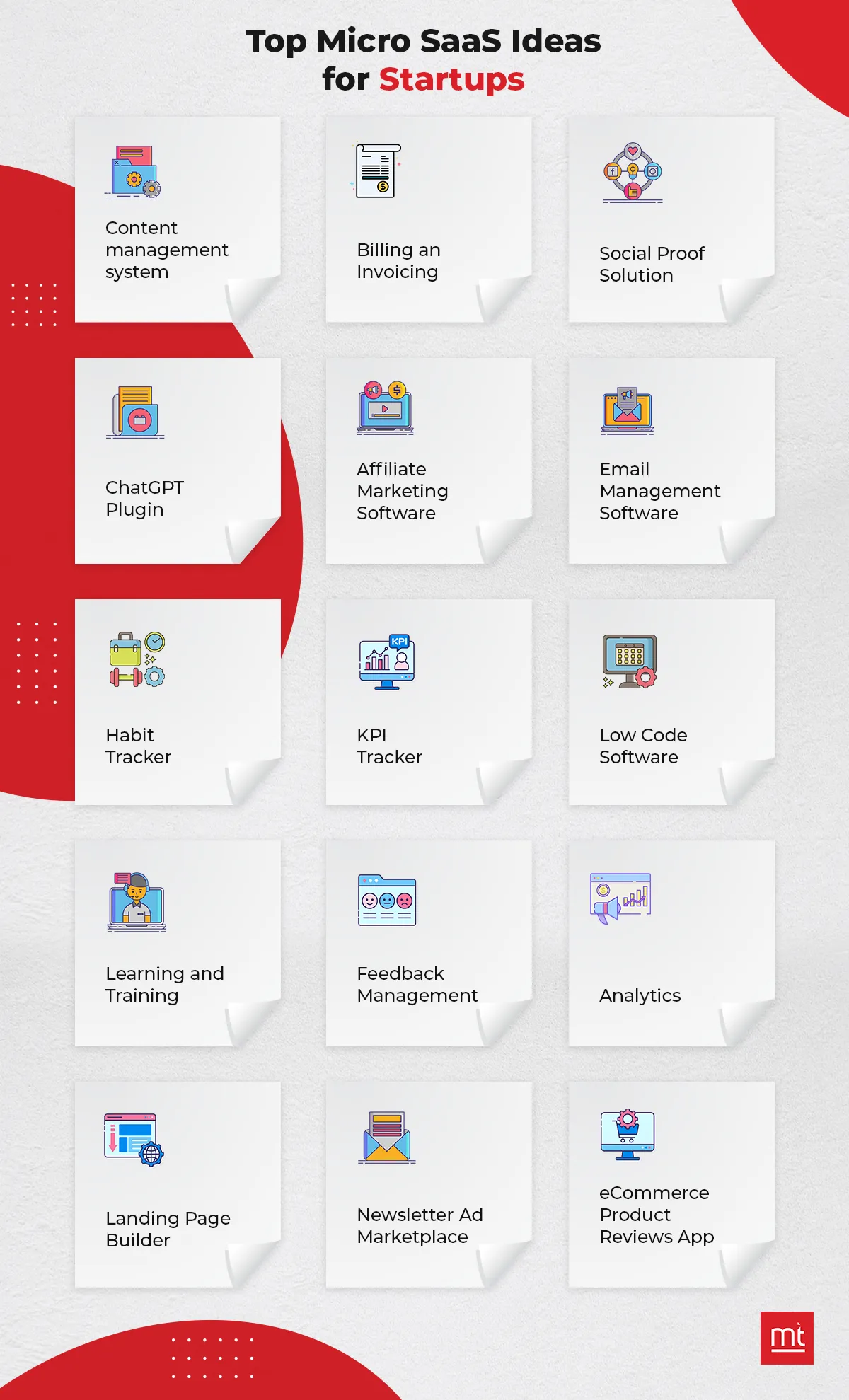
Credit: www.manektech.com
Frequently Asked Questions
Is Micro Saas Profitable?
Yes, micro SaaS can be profitable. Focus on niche markets, solve specific problems, and keep costs low. Successful micro SaaS businesses often have high margins and recurring revenue. Effective marketing and customer support are crucial for profitability.
How To Find A Niche For Micro Saas?
Identify specific problems in a niche market. Research competitors and customer pain points. Focus on underserved needs. Validate with potential users.
How To Get Into Micro Saas?
Start by identifying a niche problem. Validate your idea with market research. Develop a simple, scalable solution. Use low-code or no-code tools to build your product. Focus on customer feedback for continuous improvement.
How Do You Value Micro Saas?
To value a micro SaaS, consider revenue, growth rate, customer churn, market size, and profitability. Assess competitor benchmarks.
Conclusion
Exploring micro SaaS ideas can unlock incredible opportunities. These niche solutions cater to specific needs, ensuring high customer satisfaction. Small-scale, focused applications often lead to better user engagement and retention. Start your micro SaaS journey today and watch your business thrive in a competitive market.
Success lies in identifying and solving unique problems efficiently.
